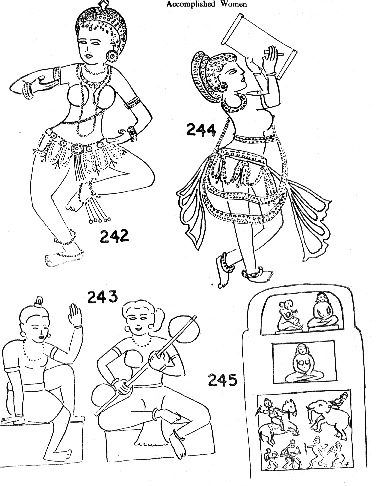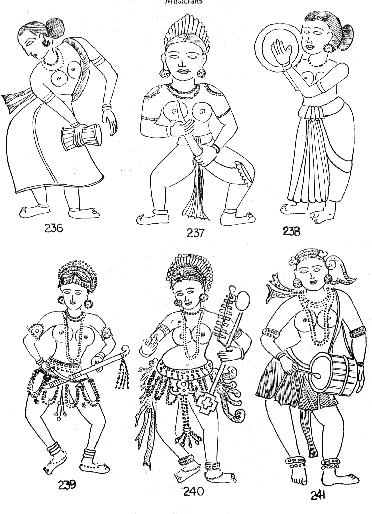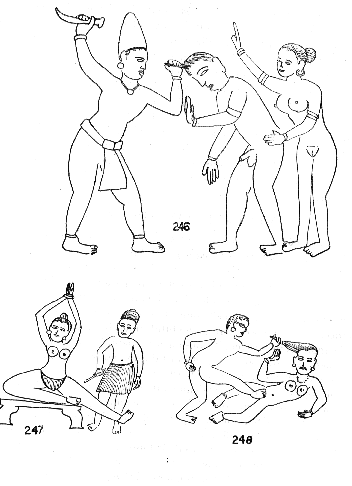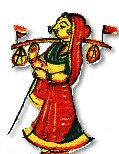by Dr. (Mrs.) Jyotsna Kamat
Last Updated : December 07, 2024
One would expect that in medieval times women were almost like domesticated pets caged in the house, considering all the equality and libertarian movements the mankind has gone though. Lawmaker Manu's oft-quoted statement that women are not worthy of freedom strengthens this expectation. However, the inscriptions, literary sources and sculptures of the period give an astonishingly different picture of status of women in South India in medieval times.
According to B.P.Mazumbar, Northern India did not have any women administrators of provinces or kingdoms during this period. In contrast, Karnataka had women who administered villages, towns, divisions and heralded social and religious institutions. Piriyaketaladevi, a queen of Chalukya Vikramaditya VI ruled three villages. According to an inscripture of 1148 A.D. Lakkadevi was a village headman. Jakkiabbe ably administered seventy villages after premature death of her husband. Mailalladevi, a senior queen of Someshwara-I ruled the important province of Banavasi comprising 12,000 villages.
It is evident from a inscripture of 1187 A.D. that the Jain nuns enjoyed the same amount of freedom as their male counterparts. There were female trustees, priestesses, philanthropists, musicians and scholars.
The historical sources of the period are abundantly filled with stories of accomplished women of the time. Shantaladevi, the Hoysala queen was an expert in singing, dancing and instrumental music. Fig 242 shows her in a graceful dancing pose. She also held durbar with her illustrious husband Vishnuvardhana. Fig 244 shows a rare carving where a woman is shown writing.

COURTESANS, TEMPLE GIRLS AND ACTRESSES
Description of courtesans had become an essential part of classics. They were recognized, tolerated and at times held respectable place in the society.
Dedicating girls to temples was an ancient practice and by the tenth century, it had become well established. They were called Devadasis (servant of God) and served priests, and noble men. Temple grants included expenses for Devadasis. Some of them were experts of arts including singing, dancing and acting performances. The institution of Devadasis continued sporadically in India till recent times (see Given to Goddess).

BONDMAIDS AND WORKING WOMEN
All menial tasks like cleaning in temples and private households were undertaken by bondmaids whose position was not high in the society. The saint-poet Basaveshwara tried to better their lot and that of their children by declaring that after initiation into Veerashaivism, the latter were to be considered holy and duly honored.
In addition to their household duties, women gave a helping hand to their men in their vocations. The occupation of a nurse (dhatri) was quite common. Women also worked in fields.
Basaveshwara's theory of Kayaka (Kayakave-Kailasa) , led many women to realize God through their humble occupations.
INSTITUTION OF MARRIAGE
Marriage was compulsory for all the girls except for those opted for asceticism. Brahman girls were married between ages 8 and 10 from sixth or century onwards up to the modern times. Polygamy was permitted to all who could afford and it was especially popular among Kshatriaysa for political reasons. According to Mansasollsa, the king should marry a Kshatria girl of noble birth for a chief queen though he is permitted to have Vaisya or Sudra wives for pleasure.
SATI OR SAHAGAMANA
Sati was prevalent among certain classes of women, who either took the vow or deemed it a great honor to die on the funeral pyres of their husbands. Ibn Batuta observed that Sati was considered praiseworthy by the Hindus, without however being obligatory. The Agni Purana declares that the woman who commits sahagamana goes to heaven and Medhatiti pronounced that Sati was like suicide and was against the Shastras. In an age of such divergent views, women of the Deccan followed a middle path. They were not coerced, although several wives committed Sati. The majority of the widows did not undergo Sati. (see: Love? Duty? or Sacrifice?)
Mahasati stones were erected in memory of brave women who committed Sati and are periodically worshipped. The number of such stones are a few, indicating a small number of such women. There are no instances of remarriage of widows. (see also: Hero-stones)
WIDOWS
Alberuni writes that Indian women preferred self immolation by Sati to the suffering of life of a widow. Ibn Batuta also felt that the plight of widows was miserable. A widow was considered an inauspicious person and was prohibited from wearing colorful clothes, ornaments, decorate hair, as is seen from descriptions in literature.
However, there are no concrete pointers to indicate that widows had to shave their heads, as became the norm in later years (see: Plight of Widows in India)
OTHER NOTES
A few women of the time who despised their husbands, attracted other men by wanton behaviors. A sculpture in Bhatkal depicts a case of a woman's infidelity. A husband catches the paramour of his wife red-handed and is about to punish him. The wife is shown as pleading for her lover (figure 246).
Pictures 247 and 248 show punishments to women for immoral behavior.

There was a class of men who believed in the superiority of women. Somadeva thought that discrimination between men and women was valid in respect of physical ability, but the latter were superior in intellectual ability. Achale was a lady of rare distinction and it is said that Chandramauli, a minister of the Hoysala Kings was a befitting husband for her. This is an expression used contrary to the normal belief of a wife being worthy of her husband.
The women of medieval Deccan were complimentary to men and not
competitive in all fields and they together made a complete unit. Women faced hardships
bravely, and excelled in the field of charity, exhibiting their sense of social service.
They were good housewives, pursued fine arts and when given a chance, shone as good
administrators and fought battles. In spiritual field also, they made their contributions.
![]()
Excerpted from Author's 1980 Book, Social Life in Medieval Karnataka, Abhinav, New Delhi.

Women of India
![]() Index
Index
- The Women of India -- table of contents
- Social themes at a temples in Bhatkal
- Vijayanagar Kings of Medieval Deccan
- Ancient India -- Land of Mystery
- Karnataka Potpourri
- India in India Ink - more line-drawings by K. L. Kamat
- Jyotsna Kamat's Home Page
- Kamat Jyotsna, Social Life in Medieval Karnataka, Abhinav, 1980.
- Kamat K.L., The Timeless Theater , CyberCrow, 1999
- Alberuni's India, 1988